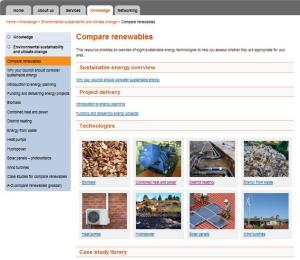For the public sector, putting the wheels in motion to use combined heat and power and develop district energy networks is very difficult. Whose job is it to take on this massive opportunity? In some councils you’ll find a dedicated district energy officer, while in others there may be a spatial planner struggling to look at this alongside other a long list of other responsibilities. With energy prices steadily rising, now is the time to develop decentralised energy. Unfortunately, there seems to be a huge gap between public and private sector skills and knowledge, leaving the public sector way behind the times.
I spoke at a Combined Heat and Power Association (CHPA) event yesterday called ‘Raising revenue from community energy’. The theme of the day was to show the mostly local authority audience the opportunities in CHP and district energy. Combined heat and power (CHP) can be simply explained as a power station (even on a small building-level scale) that lets you use the heat that all power generation creates, instead of dumping it.
Ian Manders, Deputy Director at the CHPA, spoke about the massive canyon between what the UK does in this area and what happens in other European countries, particularly Denmark. This is partly a result of a lack of necessity. The UK has historically had access to cheap coal and cheap natural gas, meaning we haven’t felt the need to develop decentralised energy technologies and infrastructure. Now that energy prices are rapidly rising we need to look to decentralised energy generation if we want any sort of security in the long term. For the public sector, this is an ideal opportunity to save money and reduce carbon emissions.
Manders pointed out that big savings are possible when you switch to CHP if the current heating system needs to be replaced or the building or area is going through significant refurbishments. These aren’t the only reasons to use CHP, but they will bring about the most savings.
Hospitals are ideal candidates to switch to CHP. According to Manders, only 60 hospital sites in the UK have CHP and 245 more need it. Housing estates and new development are also well suited to district heating. Out of a possible 14%, only 2% of dwellings in the UK are on district heating. In Denmark, district heating covers at least 60% of space heating and water heating needs. Although the UK is not able to support that level of coverage, there is huge room to grow.
So what’s stopping us? Some of the frustrations raised in the audience are a lack of understanding from local planning authorities. Planners have a key role to play in identifying and enabling opportunities for CHP through planning policies. The move to zero carbon homes and non-domestic buildings will allow planning authorities to collect money to put toward these schemes. In consultations about the zero carbon homes requirements, developers have said that they would prefer to pay into this pot rather than pay for on-site renewable energy technologies. This is one of the proposed ‘allowable solutions’ to meeting zero carbon building requirements.
My experience is that quite a few planners understand the opportunities, but there is a real skills and capacity gap preventing them from taking it forward. Part of my day job is helping planning policy officers understand what kind of policies will enable the development of district heating and where they can identify opportunities for local authority-led projects. But the recent cuts to local authority budgets will seriously jeopardise the ability for planning officers to look at these issues. Housing, regeneration and economic development often take precedence on officer time – even though they are directly related to energy opportunities.

To help make these links clearer and highlight the leadership opportunities, the Local Government Group has a FREE event on 14th March for local authority councillors and senior officers on sustainable energy opportunities. There is also an online tool to help them understand the technology opportunities with case studies of where the public sector is already leading the way (click on the image above).
